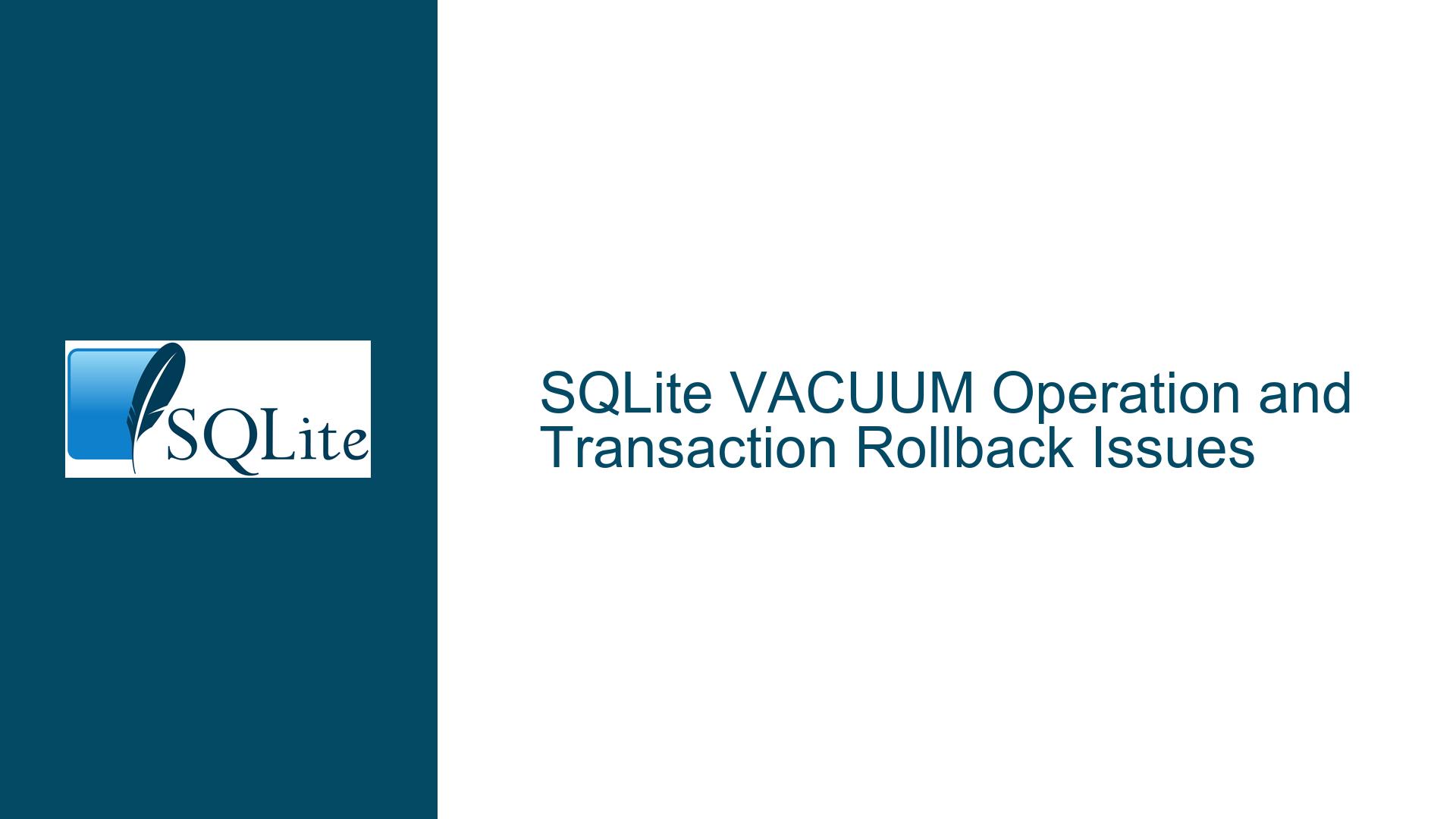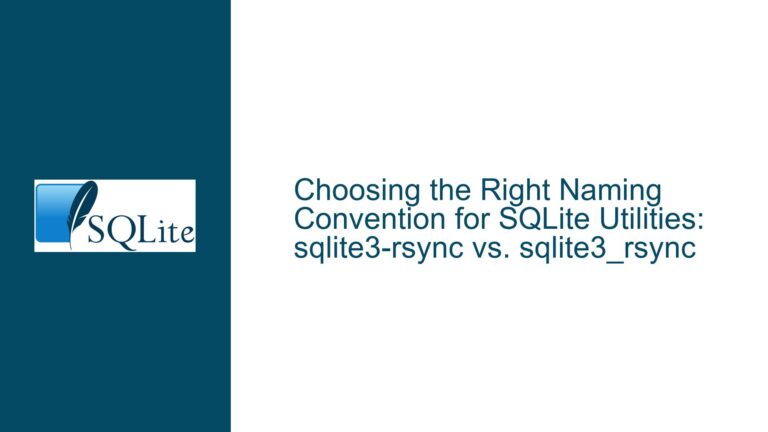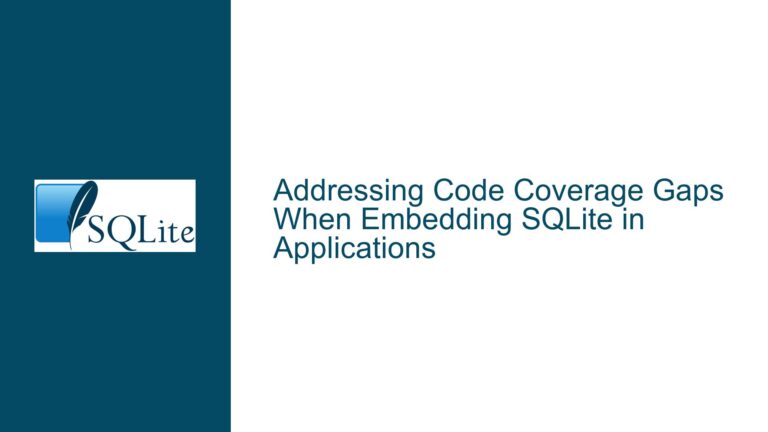SQLite VACUUM Operation and Transaction Rollback Issues
SQLite VACUUM Operation Interfering with Transaction Integrity
The core issue revolves around the SQLite VACUUM operation potentially interfering with the integrity of transactions, leading to unexpected rollbacks of changes when a database is reopened. This problem manifests in a scenario where an auto-compacting feature is enabled, triggering a VACUUM operation upon the closure of an application or workspace. While this feature works seamlessly for the majority of users, a specific customer has reported that changes made to the database are occasionally reverted upon reopening. Disabling the auto-compacting feature resolves the issue, suggesting a direct correlation between the VACUUM operation and the observed behavior.
The VACUUM command in SQLite is designed to rebuild the database file, repacking it into a minimal amount of disk space. This operation is executed as a transaction, meaning it should adhere to the same atomicity, consistency, isolation, and durability (ACID) principles as any other transaction in SQLite. However, the reported issue indicates that under certain conditions, the VACUUM operation may not be fully isolated from other transactions, leading to unintended side effects.
The problem is particularly perplexing because SQLite is designed to handle transactions robustly, even in the face of concurrent operations. When a database connection is closed, SQLite ensures that any pending transactions are either committed or rolled back, and the journal file is cleaned up to prevent lingering transactions. However, the customer’s experience suggests that the VACUUM operation might be interfering with this cleanup process, potentially cutting off the journal prematurely or otherwise disrupting the normal transaction lifecycle.
Interrupted Write Operations and Connection Management Issues
One possible cause of the issue is interrupted write operations during the VACUUM process. SQLite relies on the underlying filesystem to provide proper locking and synchronization semantics. If the filesystem does not behave as expected, or if there are issues with how the application manages database connections, it could lead to scenarios where the VACUUM operation interferes with ongoing transactions.
In the reported case, the application does not reuse database connections, instead creating a new connection for each transaction and then discarding it. While this approach simplifies connection management, it can also introduce subtle issues if connections are not properly closed or if statements are not explicitly finalized. SQLite’s documentation emphasizes the importance of explicitly finalizing all statements and closing all connections to ensure that resources are properly released and that transactions are cleanly committed or rolled back.
The use of a .NET wrapper further complicates the situation. While .NET’s using statements provide a convenient way to ensure that resources are disposed of automatically, they may not always guarantee that SQLite connections and statements are finalized in the correct order or with the necessary synchronization. If the wrapper does not fully encapsulate SQLite’s behavior, it could lead to scenarios where connections are closed before all pending operations are complete, leaving the database in an inconsistent state.
Another potential cause is the timing of the VACUUM operation relative to other database activities. If the VACUUM operation is initiated while there are still pending writes or uncommitted transactions, it could interfere with the normal transaction lifecycle. SQLite’s locking mechanism is designed to prevent such conflicts, but if the application does not properly manage transactions or if there are issues with the underlying filesystem, it could lead to scenarios where the VACUUM operation proceeds despite the presence of pending transactions.
Implementing Robust Connection Management and Transaction Handling
To address the issue, it is essential to implement robust connection management and transaction handling practices. This includes explicitly finalizing all statements and closing all connections when they are no longer needed. While .NET’s using statements provide a convenient way to manage resource disposal, it is important to ensure that they are used correctly and that they fully encapsulate SQLite’s behavior.
One approach is to implement a connection pooling mechanism, where database connections are reused rather than discarded after each transaction. This can help reduce the overhead associated with creating and closing connections and can also improve the consistency of transaction handling. Connection pooling can be particularly beneficial in scenarios where the application frequently opens and closes connections, as it ensures that connections are properly managed and that resources are not prematurely released.
Another important consideration is the use of SQLite’s PRAGMA commands to configure the database’s behavior. For example, setting PRAGMA journal_mode to WAL (Write-Ahead Logging) can improve concurrency and reduce the likelihood of conflicts between transactions and the VACUUM operation. WAL mode allows multiple readers and a single writer to operate on the database simultaneously, which can help prevent the VACUUM operation from interfering with ongoing transactions.
Additionally, it is important to ensure that the application properly handles errors and exceptions that may occur during database operations. This includes checking the return values of SQLite functions and handling any errors that may arise. Proper error handling can help ensure that the application does not leave the database in an inconsistent state and that any issues are promptly addressed.
Finally, it is important to thoroughly test the application under a variety of conditions to ensure that the VACUUM operation does not interfere with transaction integrity. This includes testing with different filesystems, under different load conditions, and with different configurations of the database and application. By identifying and addressing any issues during testing, it is possible to ensure that the application behaves as expected in production.
In conclusion, the issue of the VACUUM operation interfering with transaction integrity in SQLite can be addressed through a combination of robust connection management, proper use of SQLite’s PRAGMA commands, and thorough testing. By implementing these practices, it is possible to ensure that the VACUUM operation operates as intended without disrupting the normal transaction lifecycle.






